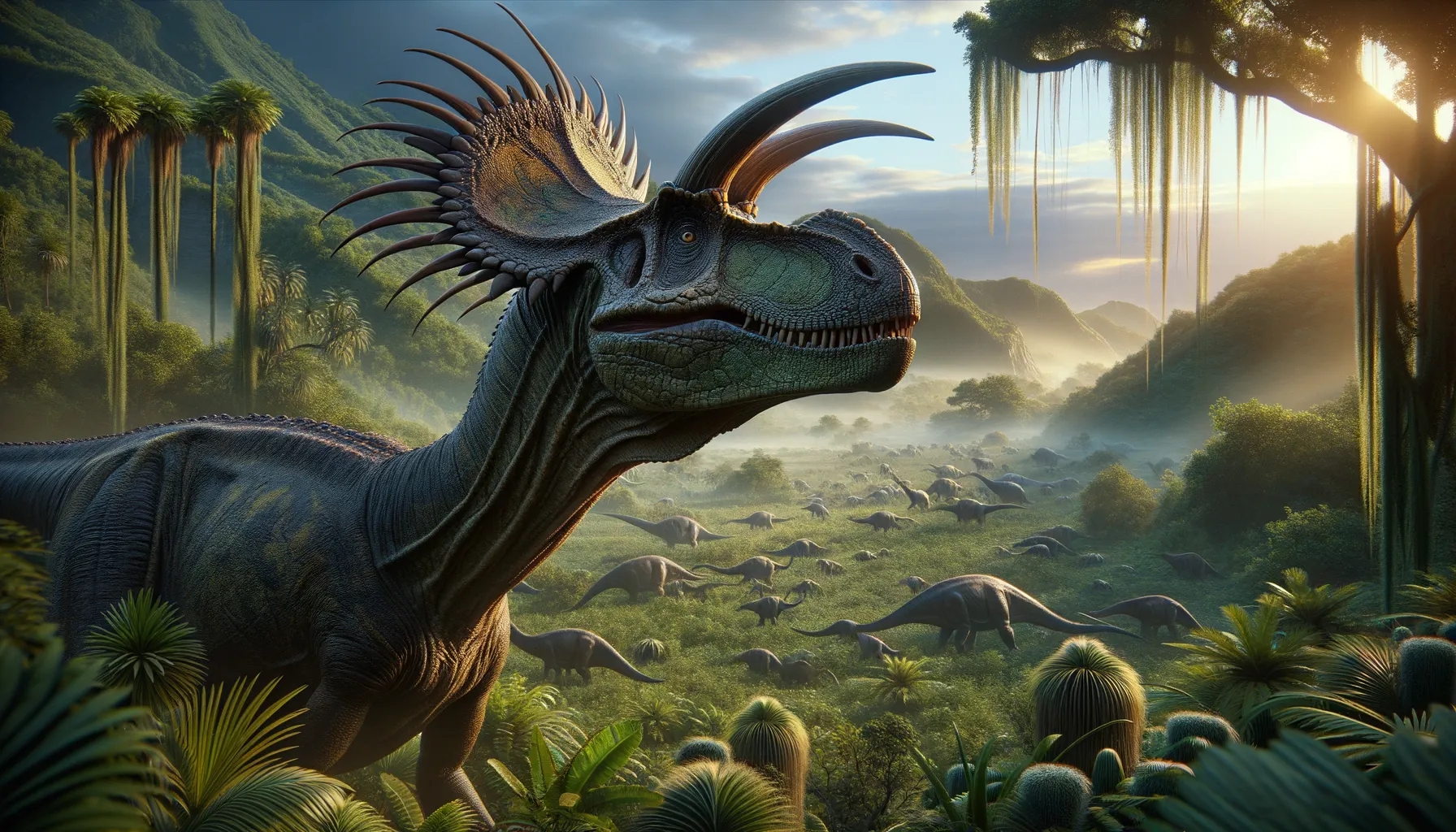
Velafrons
Crested wonder of the Late Cretaceous era.
Period
Cretaceous
Length
Roughly 25 to 30 feet long.
Height
Around 8 feet at the hips.
Weight
Approximately 2,500 kg when fully grown.
Velafrons was a remarkable dinosaur known for its unique crest atop its head. This herbivorous hadrosaurid roamed the Late Cretaceous period about 73 million years ago. Scientists identify Velafrons by its interplay of strength and size, attributes that helped it thrive in the lush, ancient landscapes. With its fascinating crest that may have been used for display purposes, Velafrons highlights the incredible diversity of prehistoric life.
Diet
Velafrons was an herbivore, primarily consuming a variety of plants, including leaves, seeds, and possibly fruits. It likely had to adapt its diet to seasonal changes, taking advantage of the diverse plant life present in its habitat.
Hunting
Being an herbivore, Velafrons did not hunt other animals but instead foraged for plant material. It may have used its beak-like mouth to efficiently clip vegetation, allowing it to gather sufficient food from its environment.
Environmental challenges
Velafrons faced various environmental challenges such as changing climates and the need to find sufficient food resources. The competition for these resources among other herbivores could have been intense, impacting its social and migratory behaviors. Additionally, surviving potential predators required staying alert and possibly moving in groups for better protection.
Speed
Moderate speed, able to move efficiently on land.
Lifespan
Estimated to live around 20 to 30 years.
First discovery
First discovered in 1995 in Coahuila, Mexico.
Fun Facts
- Velafrons was a dinosaur that lived about 73 million years ago during the Late Cretaceous period.
- The name 'Velafrons' means 'sailed forehead,' referring to the large crest on its head.
- Velafrons was a herbivore, meaning it only ate plants.
- Fossils of Velafrons have been found in Mexico, making it one of the discovered dinosaurs in that region.
- Velafrons was likely a social creature, often moving in groups or herds.
- Its large crest was possibly used for communication, such as attracting mates or signaling danger.
- Velafrons was a hadrosaurid, a member of the duck-billed dinosaurs family.
Growth and Development
Velafrons likely had a rapid growth period during its early years, reaching maturity swiftly to evade predation. It would have started life as a small, vulnerable hatchling, dependent on the care of its parents or herd for protection. As it grew, it developed its iconic crest, which might have played a role in social dynamics within the herd.
Habitat
Velafrons inhabited what is now Mexico, in regions that were lush and filled with a wide variety of plant life. These environments provided ample food resources, contributing to its survival. The terrain possibly included forests and floodplains, helping to sustain its large plant-based diet.
Interaction with other species
Velafrons may have coexisted with other herbivorous and carnivorous dinosaurs, engaging in complex ecological interactions. It likely moved in herds, which provided protection and facilitated social interactions. Predatory threats, like those from theropods, were a constant danger, necessitating alert behavior.
Natural lifespan
Velafrons had a natural lifespan of about 20 to 30 years in the wild.
Reproduction
Velafrons likely laid eggs, as is typical for dinosaurs, with nesting behavior observed in similar species. Females possibly laid clutches of eggs in secure locations, which could be guarded or concealed until hatching. The young may have benefited from parental care in their early stages of growth.
Social behaviour
Velafrons probably lived in herds, engaging in social behavior crucial for protection and survival. This social structure helped them avoid predators and find food resources collectively. Communication within the herd may have involved visual signals, particularly using their crests, and vocalizations.
Fossil locations
Fossil remains of Velafrons have been primarily found in the Coahuila region of northern Mexico. These discoveries provide critical insights into the prehistoric ecosystems of North America. The fossils help paleontologists to reconstruct its lifestyle and ecological interactions within its habitat.
